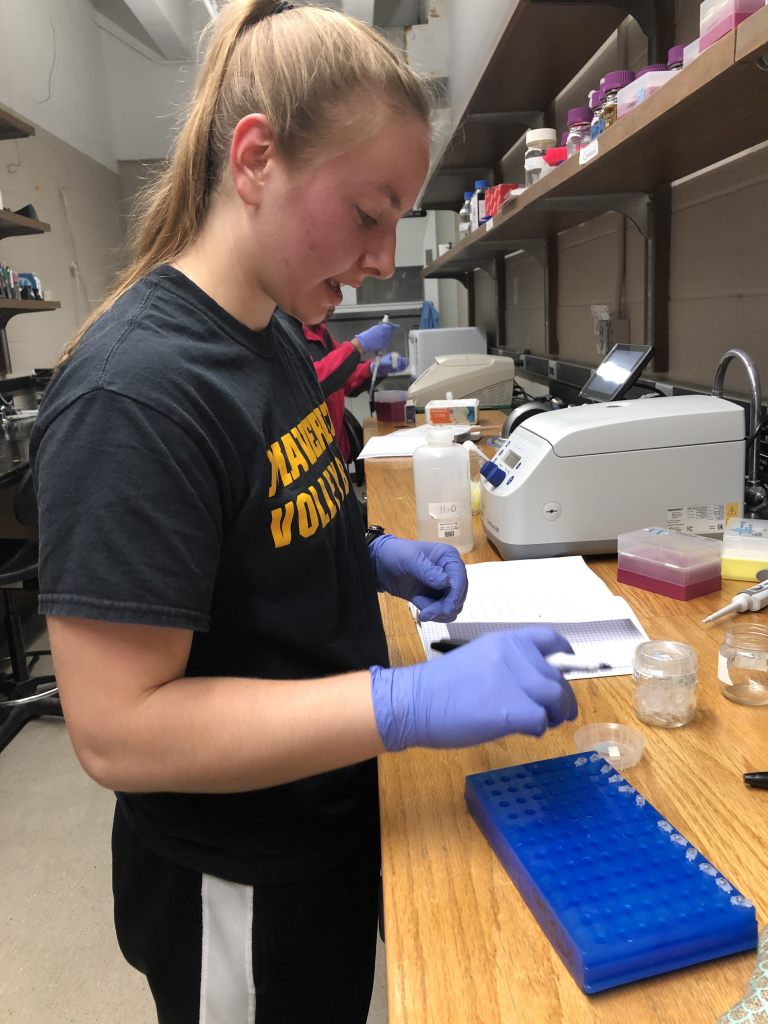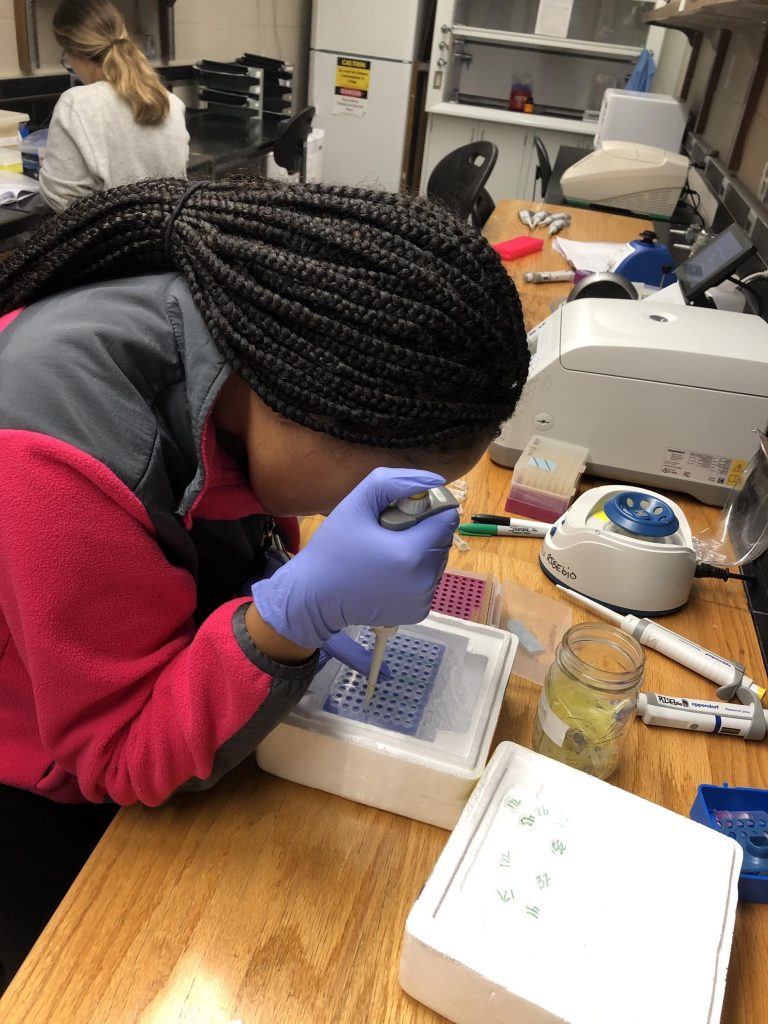11 November 2019
By: Jane Sakowicz and Leah Cox
Introduction
Since the last blog post, we have continued to work on both the NPAS-2 gene and the GPR156 gene. As stated in the previous blog post, the NPAS-2 gene serves a role in the circadian rhythm in mammals. The GPR156 gene has many different types of functions; however, we are not sure what specific role it plays in Anolis carolinensis. We ran numerous standard curves using troubleshooting techniques to get rid of the primer dimers as seen in the melt curve and gel images, and we are continuing to image the results to obtain clean data for our statistical analysis.
Research
Gel on Standard Curve GPR156
Our standard curve data showed that in the melt curve there were two peaks instead of one, which means that there may either be primer dimers present or a high Guanosine and Cytosine content. To test what caused the two peak melt curve we ran a gel, and the image showed that there were primer dimers in the samples from the standard curve; however, the triplicates were much tighter in the data, so we decided to run a full qPCR.

Full run qPCR GPR156
We ran a full 96-well plate using GPR156 primer set 2 and the cDNA we created earlier in the semester. If the data is clean from qPCR, then we will be able to see how heavily expressed GPR156 is expressed in the lizards through statistical analysis. When we got the results back, there were still two peaks in the melt curve, and the triplicates were not tight.
Gel on samples that showed multiple Tm peaks
We ran a gel on the samples in the plate that showed multiple tm peaks, and after we imaged them we saw that each of the samples had clear primer dimers.
PCR with NPAS-2
We ran a PCR with both a 0.5μM and 0.3μM dilution. After, we ran a gel on the samples. Our results showed that both of the concentrations turned out very nice.

Standard Curve NPAS-2
After running the standard curve for NPAS-2, we received good results. The only thing that we found is that there were two peaks in the melt curve. We then ran a gel to confirm that there was a single band.
GPR156 PCR with temperature gradient and dilution
To combat the problems with GPR156 and the production of primer dimers, we diluted our primers to 0.3μM and used a temperature gradient in a PCR run. By diluting the primers, we can hope that the primers will be less likely to bind to themselves than the cDNA in the sample. Also, by running a gradient in the PCR from 60°C- 65°C we can see what the optimal temperature for the diluted primer is, since we know that for the 1μM 60°C is the optimal annealing temperature.
Conclusion
Since running the PCR and qPCR, we have learned that both genes worked best if they were diluted. For the NPAS-2 gene, we diluted the primers, then ran a PCR. For GPR156, we ran a PCR with a temperature gradient in addition to another dilution. We decided to do the dilution because as we were running the qPCR, our samples kept revealing primer dimers. Although we’ve continuously run into primer dimers and other road-blocks, we are still continuing to troubleshoot our primers in order to get good numerical and visual data. We ran a standard curve on GPR156 at 1μM at an annealing temperature of 61.8°C, and we are waiting on the results. Next, we will run a full qPCR on NPAS-2.

